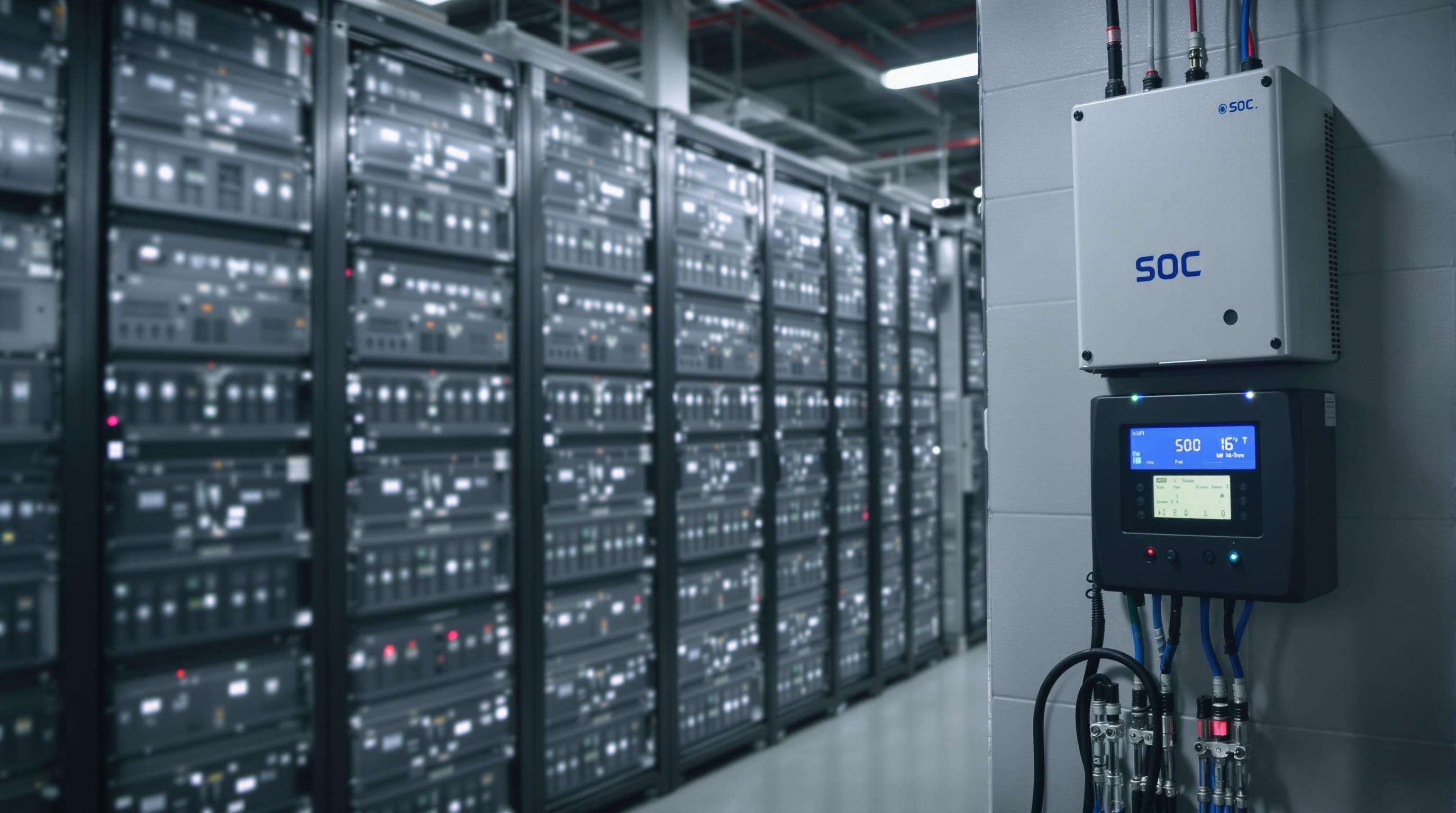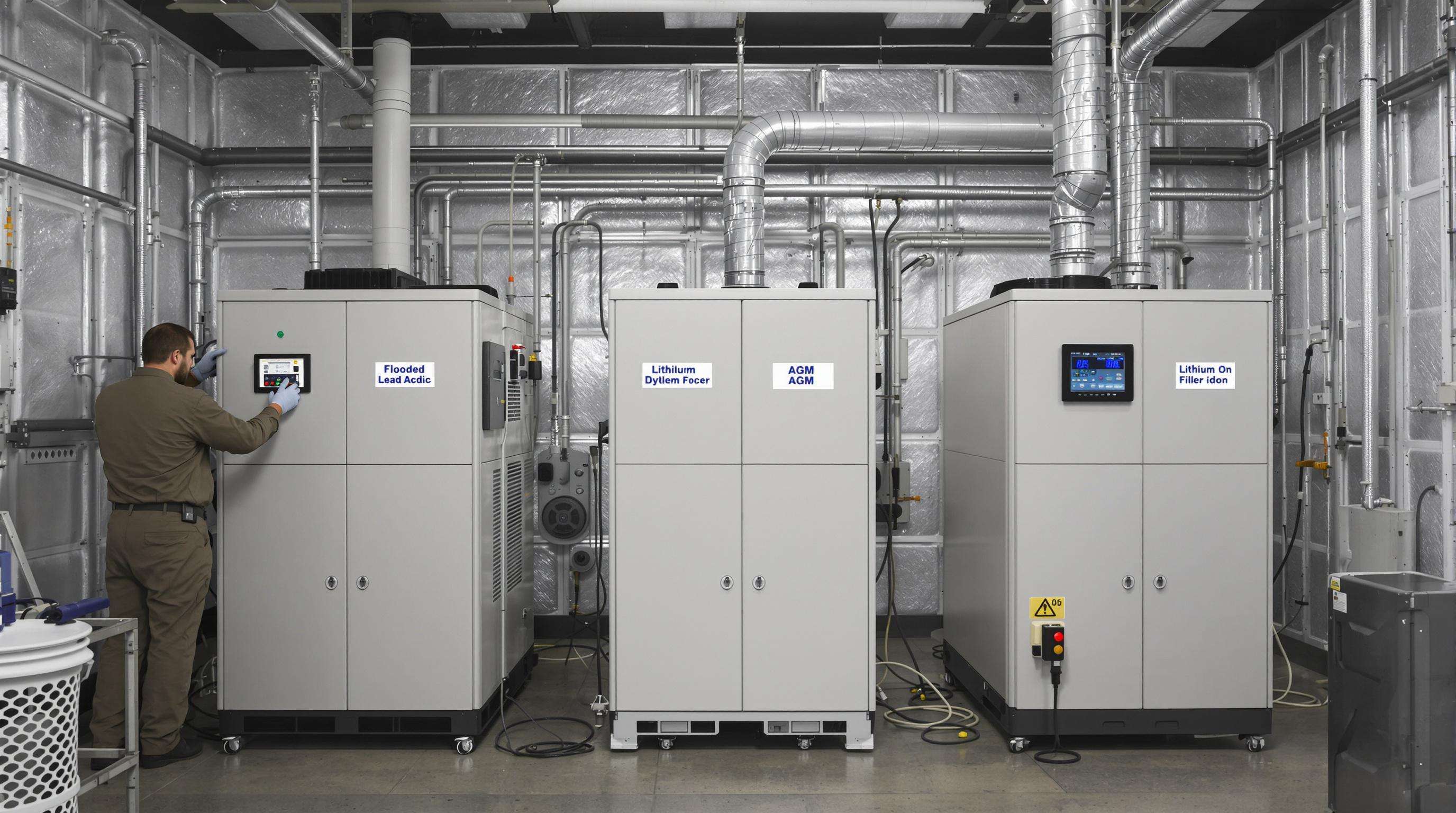
Battery storage systems rely on three main parts working together: the Battery Management System (BMS), State of Charge (SOC) monitoring, and how inverters connect everything. Think of the BMS like the brains behind the operation it keeps checking things like cell voltages, temperatures, and charge levels so nothing gets pushed beyond safe limits. SOC tells us exactly how much juice is left in the tank at any given moment. And then there are those inverters they take all that direct current coming out of batteries and turn it into alternating current that actually powers our lights, appliances, and equipment around the house or office. Without these pieces clicking properly, the whole system just doesn't function right.
The advanced battery management system (BMS) tech acts as a crucial safety net for batteries. When voltages go beyond what's considered safe range—usually between 2.5 volts and 3.65 volts per cell in lithium-ion batteries—the system cuts off power to prevent damage. This kind of protection really helps stop those dangerous thermal runaway situations that can happen with lithium batteries, while also keeping lead-acid batteries from developing sulfation issues over time. Manufacturers have found that batteries connected to good quality BMS systems tend to last around 30 percent longer than ones without any management at all. That makes sense economically too since longer lasting batteries mean fewer replacements down the road.
Modern inverters enable bidirectional energy flow between solar panels, batteries, and household loads. Smart integration prioritizes solar self-consumption during daylight hours while maintaining reserve capacity for nighttime use. This coordination ensures uninterrupted power during grid outages while optimizing renewable energy utilization through automatic source switching.

Different types of batteries need different kinds of attention. For flooded lead-acid models, folks should check those electrolyte levels every month and give terminals a good clean once a year to stop sulfation from happening. Sealed AGM batteries aren't quite as hands-on, but still need someone looking at their voltage about every three months. Lithium-ion packs are generally easier to deal with, although they do need some checking twice a year for how well the BMS is working and whether capacity stays where it should be. According to research published last year, people who use lithium-ion spend roughly two-thirds less time maintaining them compared to traditional lead-acid setups. Still worth noting though, if these maintenance tasks get ignored completely, manufacturers might not honor warranty claims when problems arise later down the road.
| Battery Type | Key Maintenance Tasks | Frequency |
|---|---|---|
| Flooded Lead-Acid | Electrolyte refilling, terminal cleaning | Monthly/Yearly |
| AGM | Voltage testing, enclosure inspection | Quarterly |
| Lithium-Ion | BMS diagnostics, capacity verification | Biannually |
When it comes to battery options, lead acid models definitely need more attention from the owner side of things, stuff like checking specific gravity levels regularly. But they do come with a price tag that's about 40 percent lower right out of the gate. On the flip side, lithium-ion batteries last way longer, somewhere between three to five times what lead acid can manage, usually giving service for around eight to fifteen years before needing replacement. The catch here is that these lithium packs have thermal management systems which means keeping an eye on temperatures becomes pretty important. According to research published in 2024, after going through 2000 charge cycles, lithium systems still hold onto about 92% of their original capacity while lead acid drops down to just 65%. And this comparison only holds true if people stick to those recommended charge limits, ideally staying within the 20% to 80% state of charge range most of the time.
Extreme temperatures cut battery efficiency by 15–30%. In winter:
Maintain storage environments between 50–86°F (10–30°C)—every 15°F (8°C) above this range halves lithium-ion lifespan. Use dehumidifiers to keep relative humidity under 60%, as moisture accelerates terminal corrosion by 200%. For long-term storage, lithium systems should be kept at 50% SOC, while lead-acid requires full charges to prevent sulfation.
First things first, make sure to unplug the battery storage system from every possible power source. Safety first folks! Put on those rubber gloves and grab some safety glasses too since we don't want anyone getting shocked or dealing with corrosive materials. Grab a wire brush and mix up some baking soda solution about one tablespoon for each cup of water. Scrub away at those terminals where the white or green corrosion has built up. For cleaning the enclosures, stick with dry microfiber cloths instead of getting anything wet around the electrical parts. After scrubbing, give everything a good rinse with distilled water, then let it dry completely. Don't forget to slap on some anti-corrosion gel before reconnecting everything again. Clean terminals really do work better, keeping electricity flowing smoothly without losing around 30-35% of voltage because contacts aren't making proper connections anymore.
When battery connections get loose, they generate resistance that turns electricity into wasted heat. This can actually push terminal temps up around 28 degrees Celsius when the system is under load. For regular maintenance, check those terminal nuts once a month with a properly calibrated torque wrench. Most manufacturers recommend settings between 8 and 15 Newton meters for lithium-ion systems specifically. Be careful not to go too tight or you might strip the threads, but also don't leave them too loose since that creates dangerous arcing issues. Start with the positive terminals before moving on to the negatives. Something worth noting is that even a small 0.1 ohm increase in resistance across any connection point could be stealing as much as 25% of available power from what matters most in the system.
Proactively monitor these deterioration indicators:
Data trends show 71% of storage system failures begin with these symptoms before catastrophic collapse. Document anomalies using your monitoring app to validate warranty claims.
When batteries come with built-in monitoring features, it makes tracking their state of charge (SoC) much more accurate along with how well the whole system is performing. The internal diagnostic systems keep checking important factors like changes in voltage, variations in temperature, and how many times the battery goes through charging and discharging cycles. This helps stop dangerous situations where batteries get overcharged or completely drained. Keeping the SoC between around 20% to 80% works best for most lithium-ion setups. Doing this protects against losing battery capacity over time and actually adds about 30% to 40% more life to these systems compared to ones without monitoring. Being able to see exactly what the battery's doing in real time lets operators make better choices about when to send power out, especially during those busy times when electricity demand spikes.
Smartphone apps have really changed how people manage their home batteries these days. Homeowners can now see all sorts of useful information displayed right on their phones, plus they get to control things remotely when needed. Most apps come with easy to read dashboards where users find details about how much energy is being used over time, what condition the battery is in, and how efficient each charging cycle actually is. The best part? These systems watch over batteries from afar so sudden failures don't happen as often, and they also help make batteries last longer because they adjust charging smartly based on conditions. When something goes wrong, customizable alerts pop up on the phone screen letting owners know there might be an issue. This means someone can tweak their energy usage even if they're at work or traveling somewhere else, which helps keep the whole battery storage system running properly without surprises.
Advanced data analysis tools look at past performance numbers to spot possible problems before they actually cause trouble during operations. These systems pick up on small changes happening over time related to things like how batteries lose their ability to hold charge, how well they accept new charges, and temperature variations across different parts of the system. When something looks off track, the software sends out warnings about common issues such as increasing internal resistance inside cells or when there's an imbalance between different electrolytes within the battery pack itself. Studies show that companies using this kind of predictive maintenance approach see around half fewer unexpected shutdowns compared to traditional methods, while spending roughly two thirds less money replacing components prematurely. Looking at patterns continuously helps create better charging plans based not just on what happened yesterday but also taking into account regular usage patterns plus seasonal changes in demand, which keeps batteries running strong right through their entire warranty period without unnecessary degradation.
When working on maintenance jobs, safety should come first. Get yourself proper gear including insulated tools, those special dielectric gloves, and make sure your eyes are protected with ANSI rated goggles. Ventilation is another big deal because lead-acid batteries give off hydrogen gas. Keep air moving through the area where batteries sit, aiming for at least 1 cubic foot per minute of airflow for every square foot of battery space. Don't forget to check gas levels regularly using good quality detectors. And it's smart to keep some baking soda or other neutralizers handy near the work area. Acid spills happen more often than we'd like, so being prepared makes all the difference in handling them safely.
Regular maintenance can actually make lithium-ion batteries last around 30 to 40 percent longer than those left alone. Keeping track of when we clean them and how their state of charge is calibrated really matters if someone wants to keep their warranty valid. Many manufacturers will just say no to warranty claims when they see sulfation damage caused by skipping those regular equalization cycles. The key thing is matching up how often we maintain these batteries with how fast they degrade. AGM batteries generally need voltage checks every three months or so, whereas traditional lead acid models should get specific gravity tests done at least once a month. This kind of schedule helps catch problems before they become expensive repairs down the road.
To tackle sulfation issues in lead acid batteries, controlled overcharging around 2.4 volts per cell works pretty well. When it comes to lithium-ion systems, keep an eye out for swelling which often signals thermal runaway problems. Checking for case expansion once a month can catch these early warning signs. If battery capacity drops more than 20 percent each year, that usually means something's wrong ahead of schedule. Impedance testing helps pinpoint bad cells when this happens. Keeping moisture at bay is another critical factor. Relative humidity should stay under 60%, either through desiccants or proper enclosure climate control. Studies show this simple measure cuts down on failures by almost 60 percent over time.
A Battery Management System (BMS) is crucial as it monitors cell voltages, temperatures, and charge levels to protect batteries from overcharging or over-discharging, thus preventing damage and extending lifespan.
Flooded lead-acid batteries require monthly electrolyte refills and yearly terminal cleaning. AGM batteries need quarterly voltage checks, while lithium-ion batteries should have their BMS checked biannually.
Extreme temperatures can reduce battery efficiency by 15–30%. In winter, use insulation; in summer, install shade structures. Monsoon seasons demand waterproofing and humidity control.
Warning signs include capacity drops exceeding 20%, bulging cases, acidic odors indicating leaks, and surface temperatures above 45°C.